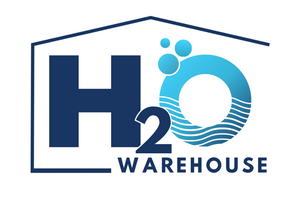Chlorine
Chlorine in Water: Balancing Disinfection and Health
Chlorine is a commonly used disinfectant in water treatment processes, playing a vital role in safeguarding public health by eliminating harmful pathogens and bacteria. While chlorine effectively disinfects water supplies, its presence can also impact water quality and pose concerns for human health. Understanding the effects, benefits, and potential drawbacks of chlorine in water is essential for homeowners seeking to maintain safe and enjoyable drinking water.
The Role of Chlorine in Water Treatment:
- Disinfection: Chlorine is widely employed in water treatment facilities to disinfect drinking water supplies, effectively killing bacteria, viruses, and other pathogens that may pose health risks. By destroying microbial contaminants, chlorine helps prevent waterborne diseases and ensures the safety of drinking water for consumers.
- Residual Protection: Chlorine's residual disinfectant properties provide ongoing protection against microbial growth and contamination as water travels through distribution systems to homes and businesses. This residual protection helps maintain water quality and integrity from the treatment plant to the tap.
- Oxidation: In addition to its disinfection capabilities, chlorine serves as an oxidising agent, effectively breaking down organic compounds, pollutants, and odorous substances present in water. This oxidation process helps improve water clarity, taste, and odour, enhancing overall water quality.
Concerns Associated with Chlorine:
- Taste and Odour: Chlorine can impart a distinct taste and odour to water, often described as "chlorine-like" or "pool-like," which some consumers find unpalatable. High chlorine concentrations or prolonged exposure may exacerbate these taste and odour issues, affecting water acceptability.
- Health Considerations: While chlorine effectively disinfects water, prolonged exposure to high chlorine levels may pose health risks, including irritation of the skin, eyes, and respiratory tract. Individuals with sensitivities or allergies to chlorine may experience discomfort or adverse reactions when exposed to chlorinated water.
- By-products Formation: The reaction of chlorine with organic matter in water can produce disinfection by-products (DBPs), such as trihalomethanes (THMs) and haloacetic acids (HAAs), which are regulated contaminants with potential health implications. Long-term exposure to elevated levels of DBPs may increase the risk of certain health conditions, including cancer and reproductive disorders.
Managing Chlorine in Drinking Water:
- Chlorine Removal: Home water filtration systems equipped with activated carbon filters or reverse osmosis membranes can effectively remove chlorine and its by-products from drinking water, improving taste and odour while reducing potential health risks associated with chlorine exposure.
- Dechlorination: Dechlorination additives, such as sodium thiosulfate or ascorbic acid, can be used to neutralise chlorine in water, mitigating taste and odour issues and reducing chlorine-related irritation for sensitive individuals.
- Balanced Approach: While addressing chlorine concerns, it's important to recognise the vital role chlorine plays in ensuring water safety and disinfection. Implementing appropriate treatment methods to mitigate chlorine's taste, odour, and health impacts while preserving its disinfection benefits is crucial for maintaining overall water quality.
Conclusion:
Chlorine plays a critical role in water treatment, safeguarding public health by effectively disinfecting drinking water and preventing the spread of waterborne diseases. However, concerns regarding taste, odour, and potential health effects associated with chlorine exposure highlight the need for balanced approaches to water treatment and management. By understanding the benefits and drawbacks of chlorine in water and implementing appropriate treatment measures, homeowners can ensure access to safe, clean, and palatable drinking water for their households.

- Choosing a selection results in a full page refresh.

